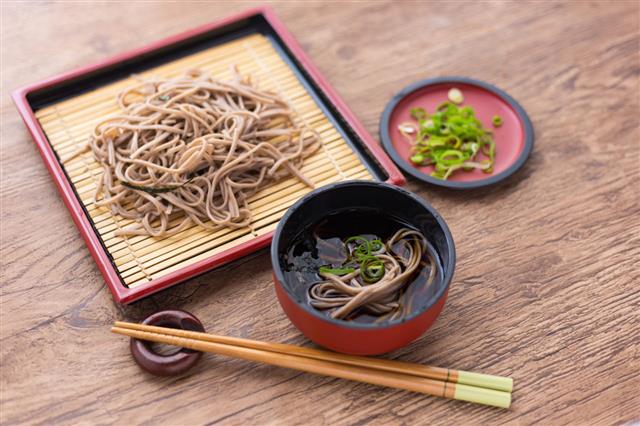
There are many types of noodles that are available, plus there are ample number of ways to cook them. Among all of them, Tastessence does a quick Chow Mein vs. Lo Mein analysis for you to know the subtle differences between the two most commonly consumed noodles.
Long Live!
The Chinese are of the belief that noodles increase longevity. Hence, they are left ‘uncut’ while cooking and serving.
The Middle Eastern countries were amongst the first people to use wheat and wheat products for food. After wheat consumption became popular around the globe, various ways, means, and dishes were found to consume it. Quite obviously, noodles were also invented by the Chinese, which, over the years and generations, got deciphered in all parts of the world, and became more varied.
The Chinese name for noodles is mein. Noodles vary greatly in terms of their preparation, size, ingredients, et al. These differences are mostly due to the place of their origin and region. But over time, these have undergone distinct differences. Two of the very famous types of noodles, which are savored with immense pleasure all over are Chow mein, and Lo mein. Refer to the below-given differences to fully equip yourself with what exactly you have been served in one of those Indo-Chinese take-away counters, who earn big in the entire USA!
Comparing Lo Mein and Chow Mein
Lo Mein
Chow Mein

About
Lo mein noodles originated in China. The word “Lo” means tossed. The other name for these are Cantonese noodles. They are available in different shapes and sizes. They are a good combination with soups, tossed vegetables, meat, and seafood. They are boiled and then added to these tossed vegetables and meat, along with sauce.
Chow mein noodles, in contrast to Lo mein, are fried noodles. They are adequately fried on both sides, till they turn brown. Therefore, they are also popularly known as ‘twice-browned” noodles. The word “chow” means fried. They are available in two variations: either steamed or crisp. The crisp noodles are flat, and the steamed ones are a little roundish in shape. Sauces can be a thick brown sauce along with soy sauce.
Ingredients
The key ingredients of Lo mein are wheat flour noodles and beef. Other ingredients include broccoli, scallions, or cabbage, mushrooms, bok choy, ginger, garlic, carrots, and peas. Adding any type of meat or seafood to Lo mein enhances it further. Here, only minced ginger and garlic are used. The sauces can vary, but the commonly used ones are soy and hoisin.
While cooking Chow mein, the noodles are first pan-fried. The ingredients can be vegetables like cabbage, beans, sprouts, scallions, along with meat or seafood. Five-spiced tofu can also go in, to make it more enticing. Sauce is the last thing to join in. Soy sauce is added along with some sesame oil and white pepper.
NOTE : In both Lo mein and Chow mein, egg noodles are used. The ingredients to make these noodles are wheat flour, salt, eggs, artificial edible color, starch, baking powder, and oil. But Lo mein noodles are thicker than its counterpart.
Style of Cooking
The main process to bear in mind while cooking Lo mein noodles is to boil them. Boil them till they are al dente, or they can also be cooked a little softer than al dente. These noodles are then kept reserved aside, till the other ingredients are cooked. The noodles are added to the ingredients only at the end by simply tossing them so that they blend.
In contrast to Lo mein, Chow mein noodles are fried. Again there are two variations. One in which the stir-fried vegetables and/or poultry are added to the pan-fried noodles. The other process includes adding the parboiled noodles directly into the veggies and/poultry, and stirring them together.
Fats
Lo mein noodles are low on the fat count, as they are not fried.
The fat count is higher in Chow mein because they are fried.
NOTE : Both Lo mein and Chow mein are sources of fats, calories, carbohydrates, and also proteins if meat or seafood is added. But the nutritional proportions of both depend on the style of cooking them. Both types of noodles are excellent in terms of fiber source.
Good food can lead to a good mood! Such is the power of food. And when it is noodles, the power accentuates as the guilt of having them is low, compared to other dishes, perhaps because they are low in saturated fats as claimed by many. Whatever may be the case, slurp a bowl of this comfort food, and be happy!






